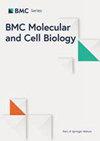肿瘤细胞衰老在非专业吞噬和细胞结构形成中的作用
IF 2.4
3区 生物学
Q4 CELL BIOLOGY
引用次数: 3
摘要
背景非专业性吞噬作用通常是由坏死细胞死亡等刺激触发的。在肿瘤治疗中,肿瘤往往在治疗结束后很长一段时间才慢慢消失。在这里,肿瘤治疗通过诱导衰老使细胞失活。因此,研究的重点是衰老是否是非专业吞噬的刺激因素,或者衰老细胞本身是否非专业吞噬。结果喜树碱可诱导细胞衰老,并进行吞噬实验。通过抗组蛋白H3K9me3和抗E-钙粘蛋白染色研究了192例癌症患者的组织衰老和非专业吞噬作用。衰老的成纤维细胞和胰腺癌细胞吞噬坏死细胞,但不被吞噬。在直肠癌组织中,衰老细胞可以吞噬,也可以被吞噬。直肠癌组织中大量的衰老细胞,同时大量的非专业吞噬细胞,导致对总生存率极为不利的预后。结论衰老细胞在体内可以非专业吞噬,同时也可以非专业地吞噬。体外实验表明,衰老不太可能是非专业吞噬作用的强烈诱因。非专业吞噬作用的高比率和衰老的高比率是总体生存率的一个极差的预后因素。本文章由计算机程序翻译,如有差异,请以英文原文为准。
Role of tumor cell senescence in non-professional phagocytosis and cell-in-cell structure formation
Background Non-professional phagocytosis is usually triggered by stimuli such as necrotic cell death. In tumor therapy, the tumors often disappear slowly and only long time after the end of therapy. Here, tumor therapy inactivates the cells by inducing senescence. Therefore, study focused whether senescence is a stimulus for non-professional phagocytosis or whether senescent cells themselves phagocytize non-professionally. Results Senescence was induced in cell lines by camptothecin and a phagocytosis assay was performed. In tissue of a cohort of 192 rectal cancer patients senescence and non-professional phagocytosis was studied by anti-histone H3K9me3 and anti-E-cadherin staining. Senescent fibroblasts and pancreas carcinoma cells phagocytize necrotic cells but are not phagocytized. In the tissue of rectal carcinoma, senescent cells can phagocytize and can be phagocytized. A high number of senescent cells and, at the same time, high numbers of non-professional phagocytizing cells in the rectal carcinoma tissue lead to an extremely unfavorable prognosis regarding overall survival. Conclusion Senescent cells can be non-professionally phagocytized and at the same time they can non-professionally phagocytize in vivo. In vitro experiments indicate that it is unlikely that senescence is a strong trigger for non-professional phagocytosis. Combined high rates of non-professional phagocytosis and high rates of senescence are an extremely poor prognostic factor for overall survival.
求助全文
通过发布文献求助,成功后即可免费获取论文全文。
去求助
来源期刊

BMC Molecular and Cell Biology
Biochemistry, Genetics and Molecular Biology-Cell Biology
CiteScore
5.50
自引率
0.00%
发文量
46
审稿时长
27 weeks
 求助内容:
求助内容: 应助结果提醒方式:
应助结果提醒方式:


